A research project that examines the relationships between insects, plants and farming moves into its second year
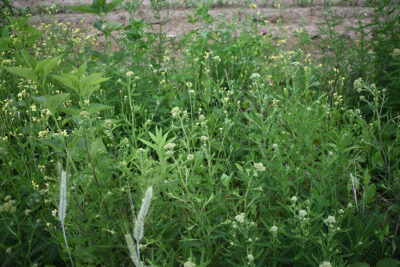
A straight line of native plants cuts through a farm field of soybeans. The line is also known as the Beetle Bank.
The Farm Hub welcomes the second year of the Beetle Bank initiative, a project being led by researchers under the Applied Farmscape Ecology Program that involves creating a bank and studying what could be beneficial relationships between insects, native plants, and farming.
Running one thousand feet long and six feet wide, the bank has been seeded with a mix of more than a dozen species of perennial native plants, including several bunch types of grass as well as Ox Eye Sunflower, Brown-Eyed Susan, Wild Bergamot, and New England Aster. In spring 2021 the bank was created and seeded within farmland that is in rotation between corn and soybeans.
In early June Claudia Knab-Vispo, a researcher with the Hawthorne Valley Farmscape Ecology Program, arrived at the bank with interns to study its vegetation development. They also hand-weeded the bank and pulled out fast-growing weeds.
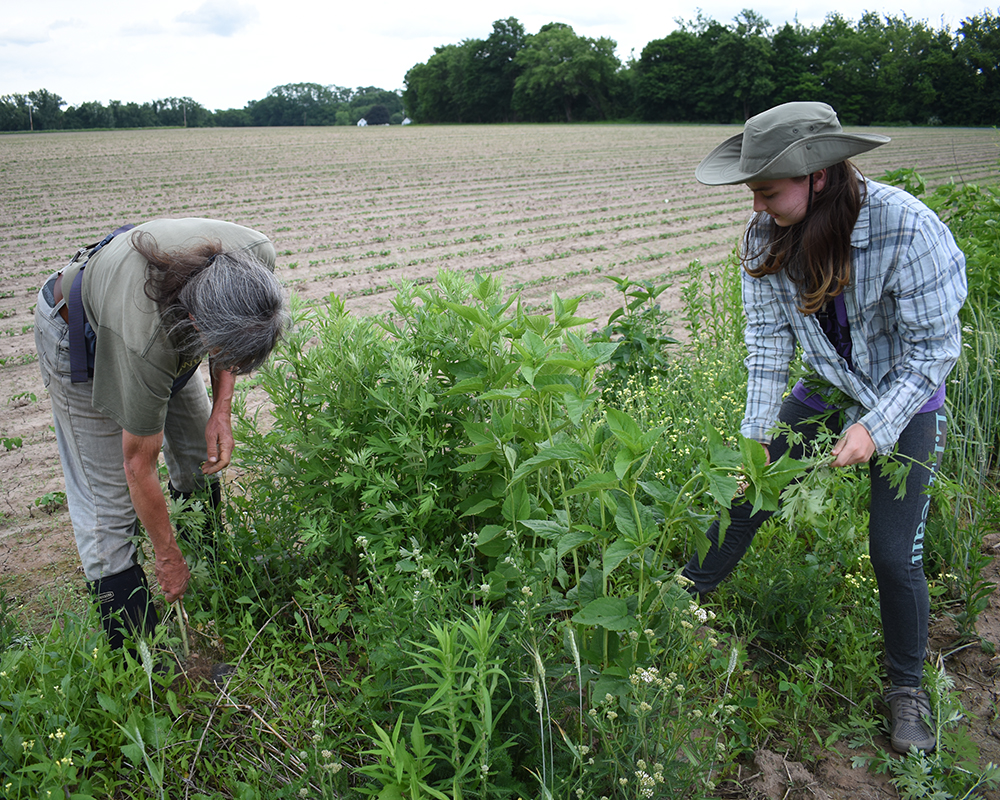
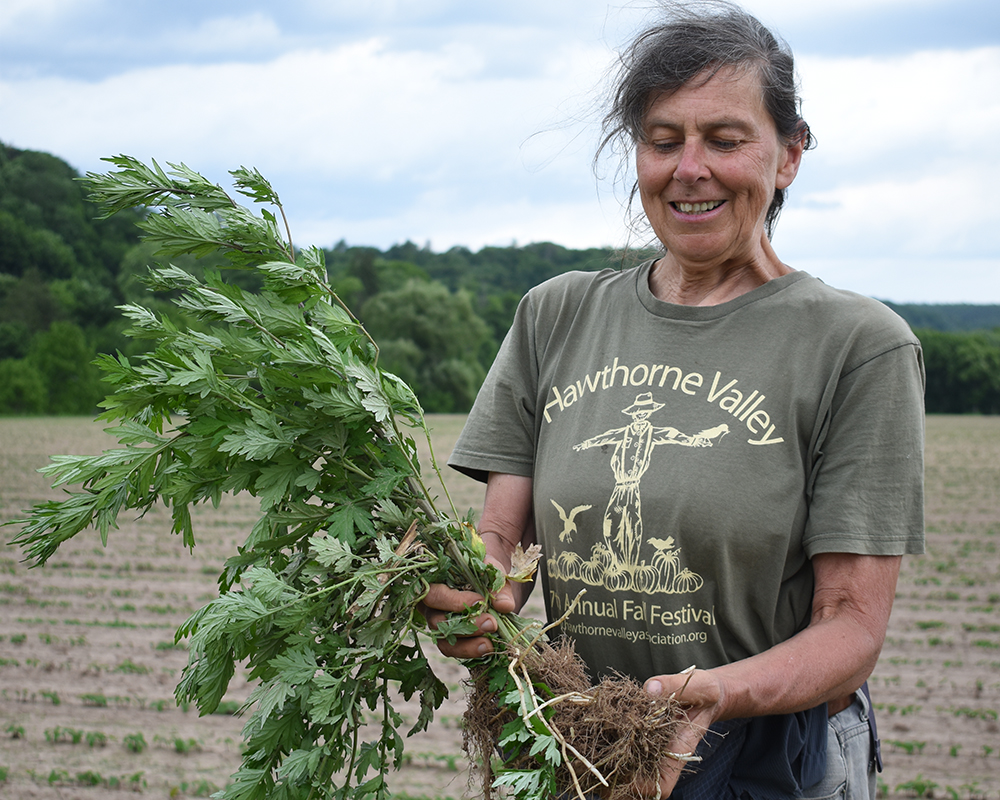
The project is planned for a minimum of three years. It involves the documentation of the vegetation in the beetle bank twice a year and—more importantly—repeated surveys of ground-dwelling insects in the beetle bank and in the adjacent crops at a variety of distances from the bank. “That’s the benefit to doing it multiple years in a row in the same ways so you can see if something is changing,” says Knab-Vispo who leads the botanical research.
A Beetle Bank is intended to provide an undisturbed overwintering refuge for beneficial insects. When crops begin growing in the adjacent tilled fields, some insects might move from the beetle bank into the fields and “help control pests and maybe even eat weed seeds and help control the weeds in the crops,” she continues. “At least, that is the theory that people have come up with in heavily agricultural landscapes like in central England or like out in California.” Beetle Banks originated in England in the 1980s to offer habitat for predatory insects and spiders who in the spring were found to move into neighboring crops and reduce pests.
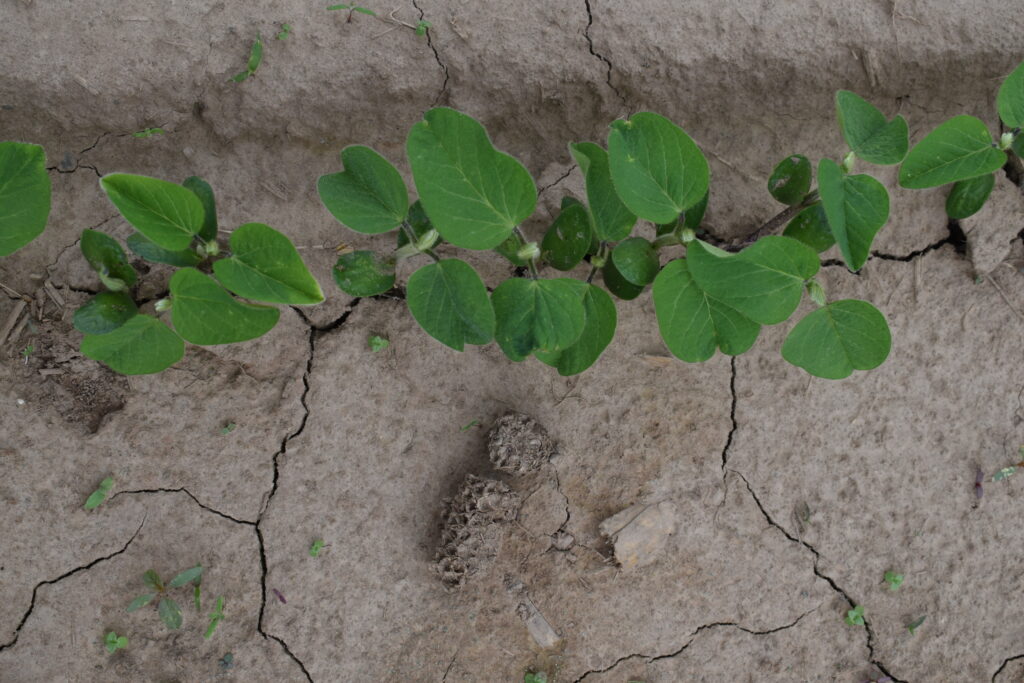
They have been more commonly adopted in California and less so in the Northeast.
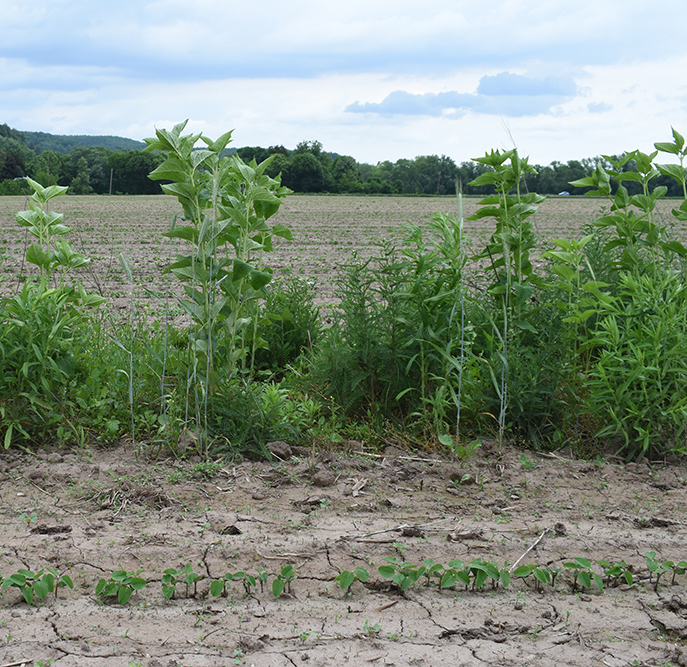
“I think it’s a relatively new concept in the Hudson Valley and it was developed in agricultural landscapes where you have a lot less natural areas around the fields and large, large fields. We don’t know yet if it is worth the effort in our landscape,” says Knab-Vispo.
A living community
At the Beetle Bank at the Farm Hub, there is evidence of a living community, including ground beetles and spiders.
“And we found a toad,” Knab-Vispo laughs. Questions that emerge from what has been observed include: what creatures gravitate towards the bank and which of these also move out into the crops? What behavioral patterns can be noted and applied to farms in the Hudson Valley region?
That said, there are always challenges in building something new. The crops from the adjacent fields at times creep into the Beetle Bank. And it can get weedy. Amid a complex matrix of weeds and crops, it can be hard to capture insects. But the researchers have found clever solutions such as burying empty yogurt containers in the ground that insects will walk into. The bank is well marked by orange flags and GPS is used.
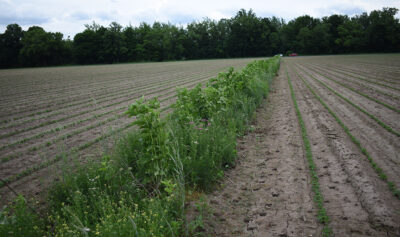
The research team plans to share its findings with regional farmers to help them decide if they want to create their own beetle banks.
“We felt it was worth trying out how a Beetle Bank behaves in this landscape here and whether there’s really any benefit that we can see to it or not,” Knab-Vispo says. So far, “I’m actually really impressed and happy by how well the native plants that we seeded last year established themselves. Now the big question is: does it harbor beneficial insects and do they venture out into the crops to provide their “services” to the farmer?”
-Amy Wu
To learn more about Beetle Banks and beneficial insects explore the following:
